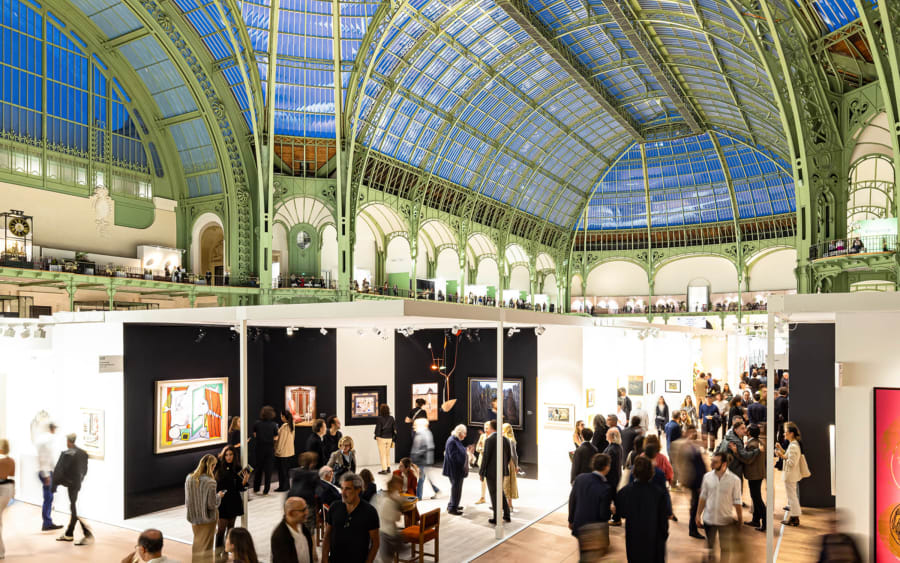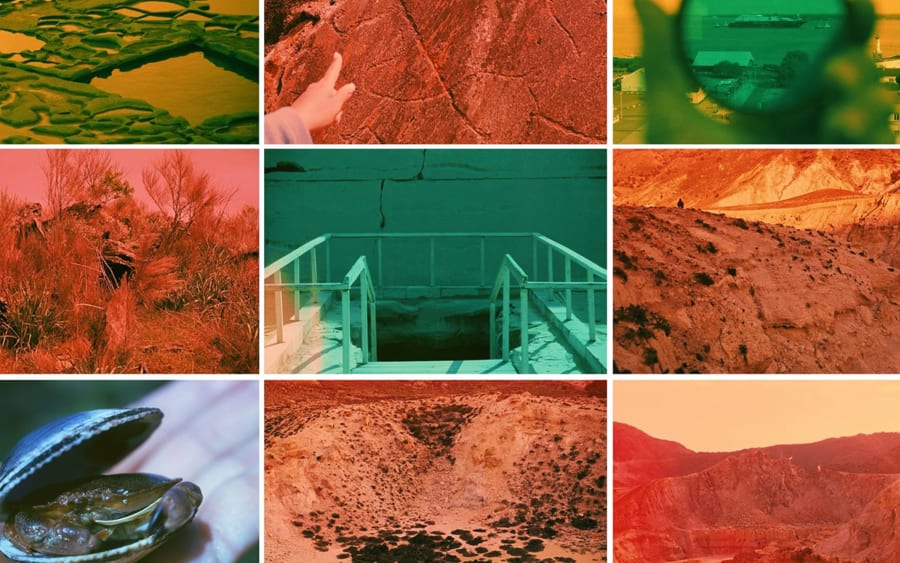Art Basel, which opens its 2025 edition at the Messeplatz on June 19, has always been a haven for the most blue-chip of art – though, since its inception in 1970, the cutting-edge art of the day has also been a major focus of the Swiss art fair and its dealers. This year is no exception, with sections including Unlimited, Premiere, and Statements showcasing some of the newest pieces by up-and-coming names. But this time around, the smart money may not always be on the ultra-contemporary.
In the heady years leading up to the pandemic – and in the short-lived rebound after lockdowns were lifted – the newest names would often sell out before the fair doors even opened. Yet, if current market trends are to be believed, the pendulum appears to be swinging. Recent data accrued from the trade demonstrates that blue-chip Modern and postwar galleries are seeing steady interest from collectors across numerous demographics.
So, is the era of overnight hype nearing its end?
‘There’s a long-awaited recalibration in motion – and that’s a good thing,’ says Marc Glimcher, the president and chief executive of Pace Gallery. ‘We’re seeing a return to informed, deliberate collecting. It’s not just about what’s new – it’s about what lasts.’
This shift is playing out in rising demand in the gallery sector for Impressionist and Modern art –what is known in the trade as ‘Imps and Mods’ – typically created by artists born between 1821 and 1910. While auction sales in these categories have softened – falling by 17% for both Modern art (to USD 2.2 billion) and Impressionist and Post-Impressionist art (to USD 1.2 billion) in 2024, according to the latest Art Basel and UBS Art Market Report – dealers are reporting healthy interest – and, crucially, sales – in older categories of art. According to the same report, sales for dealers in the Modern and postwar sectors held steady or grew in 2024, while those focused exclusively on the contemporary end saw an 11% drop in sales in terms of value.
And, as Glimcher observes, a renewed interest in the masters of the 20th century is not just limited to one generation of buyer. ‘Many collectors in their 30s, or even younger, are showing strong interest in 20th-century art,’ he says.
Reflecting this pendulum swing, at the fair this year, the centerpiece of Pace’s booth is a 1969 painting by Picasso, Homme à la pipe assis et amour, a late-career work that blends figuration and abstraction. Priced in excess of USD 30 million, it is the most expensive work on the US gallery’s booth. Compare this with just 2 years ago when the headline work was a porcelain sculpture by one of contemporary art’s best-known names, Jeff Koons.
Nonetheless, all segments of the market are battling global geopolitical and economic headwinds. ‘This isn’t just a post-Covid inflationary cycle,’ Glimcher says. ‘We’re dealing with genuine global instability.’ The Austrian dealer Thaddaeus Ropac, who has galleries in London, Paris, Seoul, and Salzburg, puts it plainly: ‘There’s the war in Ukraine; the Israel-Palestine conflict; Trump’s erratic politics; rising far-right parties in Europe – it’s a highly unstable mix.’
For many collectors, this uncertainty has translated into hesitation – or even stasis. ‘In 2008, the crisis was financial and relatively simple,’ says Almine Rech, the French art dealer who represents artists including James Turrell and Jeff Koons. ‘Now it’s more multifaceted. Some clients are anxious about the stock market, others about global tensions. Capital restrictions have forced some to step back entirely.’
Some gallerists see opportunity in this moment. While Benjamin Evans of the Montreal gallery Landau Fine Art concurs with his peers, he strikes a more positive tone: ‘Currency fluctuations, geopolitical shifts, capital controls – it’s extremely difficult. It could even be prohibitive for many businesses. But exceptional art still cuts through. It’s lasting, and people feel that.’
Looking back to the overheated market that followed the pandemic, Rech suggests a reset was needed, and was perhaps overdue. ‘After the pandemic, the market was not normal,’ she says. ‘We got into bad habits. For many 21st-century artists, their work sold before the fair even opened. You couldn’t even call it a sale – it was about choosing who got the piece.’
So is this the end of the contemporary art boom? Not quite. ‘That’s really an auction-only phenomenon,’ says Glimcher of the most recent data. Auction sales in the contemporary art sector saw a sharp contraction in 2024, falling by 36% year-on-year to USD 1.4 billion – their lowest level in 6 years. Works created within the past 20 years were hit hardest, with sales dropping 43% to just USD 1.1 billion, down from a peak of USD 2.9 billion in 2021.
Glimcher adds: ‘Our young artists remain subject to great speculation. Are they as sold out on day one now as they ever have been? Absolutely.’ But in this new climate, pricing must be right, particularly for contemporary artists. ‘At Pace, we raise prices carefully – maybe 10% a year,’ the dealer says. ‘That protects artists when the froth fades.’
For the London-based dealer Alison Jacques, institutional weight is critical. ‘Collectors are gravitating toward artists they can research and see in museum collections,’ she says. ‘It gives them confidence.’ At Art Basel, Jacques is showing works by Lygia Clark, the pioneering Brazilian artist associated with the Neo-Concrete movement. A retrospective at the Neue Nationalgalerie in Berlin (until October 12, 2025), traveling to Kunsthaus Zürich (opening November 11, 2025), has spurred renewed interest in Clark’s work – and sales to key collections. ‘These museum moments matter,’ Jacques says. ‘Collectors are taking note.’
Ropac agrees: ‘It’s not just about avoiding risk. People are paying attention to institutional context. They’re reading catalogues. They’re asking questions.’
This renewed emphasis on scholarship and transparency is also being mirrored in due diligence practices, particularly around provenance. The Art Loss Register (ALR), which works with auction houses, galleries, and major fairs such as Art Basel, has seen growing demand for its certification services. ‘The definition of provenance is definitely expanding,’ says Charlotte Chambers-Farah, the global art fair manager at the ALR. ‘It’s no longer just about Nazi-era looting – we’re seeing rising concern around financial disputes, Ponzi schemes, even the source of acquisition funds.’ For many collectors, an ALR certificate is fast becoming a mark of good faith and legal reassurance in an increasingly scrutinized market.
The Art Basel and UBS Art Market Report reinforces this, noting that dealers representing established artists with strong provenance and institutional support saw a 5% increase in sales in 2024, even as the overall global art market declined by 12%.
Judicious pricing plays a role, too. The report notes that, while the value of sales for contemporary art dealers fell by 11% last year, the number of transactions rose by 3%, pointing to vibrant activity at more accessible price levels. As Ropac puts it: ‘If the primary prices are serious and stable, younger artists will keep momentum.’
Unlike the primary market where supply is plentiful, one of the perennial problems for dealers in older art is sourcing top material. For Benjamin Evans, scarcity is part of the appeal for collectors. ‘There has been a staggering scarcity of Modern masters in the art market. You just do not have voluminous quantities of masterworks being sold at public auction,’ he says.
Landau Fine Art is bringing some of those hard to source pieces to Art Basel, including Henry Moore’s Reclining Figure: Curved (1977), a unique black marble sculpture once admired by the French fashion designer Hubert de Givenchy (who reportedly once sat on the piece). Also on view will be Alberto Giacometti’s Caroline (1963) – a painting formerly in the possession of the Swiss dealer Ernst Beyeler – and René Magritte’s La Corde Sensible (1960), originally painted for the artist’s wife and once held in jeweler Harry Winston’s family collection. Evans says all works on show will be available for purchase, though declined to share prices.
As always, the question is not just what is selling – but why. ‘Art is a Veblen good,’ Glimcher says. ‘When the price goes up, demand can follow. But when the market overheats, someone pushes too far – and then it resets. That’s part of the cycle.’
But is this just another cycle, a necessary reaction to the natural ebb and flow of market forces – or the start of something more enduring? Across the board, dealers say their roles are evolving. There are fewer pre-sales, and there is more attention to context, scholarship, and careful placement. ‘We’re still selling younger artists – but differently,’ Rech says. ‘It’s about placing works with the right people – not just moving fast.’
Nina Fellmann of Annely Juda Fine Art observes a similar recalibration. ‘Buyers are doing their homework,’ she says. ‘There’s more strength in the middle market now than the very top.’ The gallery’s booth at Art Basel features work by Judith Godwin, the Abstract Expressionist whose market visibility is growing thanks to renewed scholarly interest. ‘Collectors are responding to that rarity,’ Fellmann says. ‘This return to healthier buying habits – it’s long overdue.’
Evans agrees. ‘There’s a disconnect between how the art market is written about and how it’s really experienced. What matters is patience; expertise; conviction.’
On the eve of Art Basel's Swiss edition, there is a sense that the art market is entering a new chapter, and with it a more deliberate mode of selling and collecting. As Glimcher says: ‘We’re at the end of a cycle. At this point, there’s a lot of overhead in the sector. When overhead begins to overhang, that drives change. It drives innovation. So we are, I think, at a precipice of transformation.’
Tom Seymour is the London Correspondent for Cultured magazine. He also writes for The Art Newspaper, ArtReview, The Financial Times and Frieze.
Caption for top image: View of Landau Fine Art's booth at Art Basel 2022, with works by René Magritte and Yves Tanguy.
Published on June 9, 2025.


